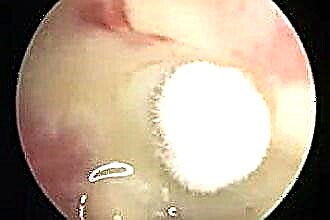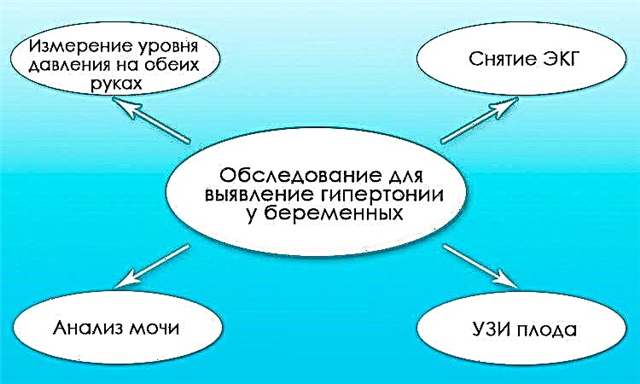Bronchitis and tracheitis are diseases with similar symptoms and causes, which are most often exacerbated in the spring-autumn period. A hacking dry cough is a common symptom that may indicate the development of both the first and second diseases. What is the difference between bronchitis and tracheitis?
With tracheitis, inflammation is observed at the level of the trachea, and with bronchitis, at the level of the bronchial tree. Both parts of the respiratory tract belong to the lower respiratory tract, however, the localization of lesions in diseases will be different. In this regard, some clinical manifestations of diseases will be almost identical, while others will have fundamental differences.
Differences in anatomy
 Is it possible by the symptoms to independently determine which disease has arisen: tracheitis or bronchitis? Both respiratory diseases have similar symptoms due to the close location of the mentioned parts of the respiratory tract. And yet, the first thing that has fundamental differences between diseases is the level of damage.
Is it possible by the symptoms to independently determine which disease has arisen: tracheitis or bronchitis? Both respiratory diseases have similar symptoms due to the close location of the mentioned parts of the respiratory tract. And yet, the first thing that has fundamental differences between diseases is the level of damage.
The trachea is called the windpipe, which is located directly between the bronchial tree and the larynx. It is a cartilaginous tube approximately 11 cm long, which divides into the two largest bronchi. That is, the trachea and bronchi are components of the tracheobronchial tree.
The windpipe is located slightly higher than the bronchial tree, therefore, with tracheitis, the risk of developing serious complications is 3 times lower than with bronchitis.
Despite the fact that the trachea is part of the lower respiratory tract, tracheitis, according to the international classification of ENT diseases, refers to diseases of the upper respiratory tract. It should be noted that inflammation of the trachea in 96% of cases occurs against the background of other diseases, in particular bronchitis. The combined inflammation of the mucous membranes and the bronchial tree, and the trachea is called tracheobronchitis.
What is bronchitis?
How to understand whether tracheitis or bronchitis caused a dry barking cough? At first glance, the diseases are very similar, so it is extremely difficult for an average person to accurately determine the cause of a deterioration in well-being. To understand this issue, it is worth considering in more detail the features of the development of both tracheitis and bronchitis.
Bronchitis is an allergic or infectious inflammation of the bronchi, which often occurs as a complication of other ENT diseases. The development of the disease may be preceded by ARVI, tonsillitis, laryngitis, tracheitis, sinusitis, etc. With an infectious-allergic lesion of the respiratory tract, the bronchial mucosa can swell strongly. In this case, patients are diagnosed with obstructive bronchitis.
Features of treatment depend on the form of the disease (acute or chronic) and provoking factors.
What is tracheitis?
How to distinguish tracheitis from bronchitis? Tracheitis is a septic or allergic inflammation of the tracheal mucosa. The disease rarely develops in isolation, therefore, patients are more often diagnosed with combined diseases - pharyngotracheitis, laryngotracheitis, tracheobronchitis, etc.
Inflammation of the windpipe is most often seen in the presence of chronic rhinitis, tonsillitis, flu, or scarlet fever. With delayed and incorrect treatment, the infection can descend into the bronchi and provoke complications. As in the case of bronchitis, treatment methods depend on which infectious agent caused the inflammation of the respiratory system.
Sometimes acute tracheitis becomes chronic, in which a sluggish inflammation occurs in the windpipe. A high fever and persistent cough may not bother the patient until an exacerbation occurs. Relapses of inflammation are facilitated by hypothermia, decreased immunity, deficiency in the body of nutrients, etc.
Reasons for development
The most common cause of respiratory diseases is the defeat of the ENT organs by a viral infection. What infectious agents cause tracheitis or bronchitis? The development of diseases is provoked by nonspecific pathogens - adenoviruses, parainfluenza virus, rhinoviruses, etc. In this case, the infection begins to develop actively only in the case of a decrease in the body's defenses.
 Infectious agents initially enter the upper respiratory tract, i.e. nasal and oral cavity. Inflammation of the mucous membranes is evidenced by nasal congestion, constant sneezing, low temperature and malaise. If the development of the infection is not stopped, over time, the lower respiratory tract will be involved in the inflammation - the larynx, trachea and only then the bronchi. Gradual inflammation of the respiratory tract is associated with a descending path of infection.
Infectious agents initially enter the upper respiratory tract, i.e. nasal and oral cavity. Inflammation of the mucous membranes is evidenced by nasal congestion, constant sneezing, low temperature and malaise. If the development of the infection is not stopped, over time, the lower respiratory tract will be involved in the inflammation - the larynx, trachea and only then the bronchi. Gradual inflammation of the respiratory tract is associated with a descending path of infection.
In addition to viruses, disease-causing microbes can cause inflammation of the bronchial tree and trachea. With bacterial damage to the respiratory system, patients experience symptoms of general poisoning - nausea, lack of appetite, headaches and drowsiness. What is the reason for this? The fact is that pathogenic bacteria (Staphylococcus aureus, Streptococcus, Enterococcus) release toxic substances that enter the systemic circulation. With the blood stream, they are carried throughout the body, as a result of which the patient's condition deteriorates greatly.
White plaque on the walls of the throat and purulent impurities in sputum are the main signs of the development of bacterial inflammation in the airways.
Similarities in symptoms
Due to the fact that inflammation of both the trachea and the bronchi is caused by the same pathogens, the diseases have many common clinical manifestations. How to understand that a patient has tracheitis or bronchitis? Common manifestations of ENT diseases usually include:
- dry or moist cough;
- headache;
- muscle weakness;
- lack of appetite;
- discomfort when swallowing;
- low temperature (subfebrile condition).
A rise in temperature, muscle weakness and headache are typical manifestations of most ENT diseases, which indicate intoxication (poisoning) of the body with the products of the vital activity of bacteria or viruses.
Few people know that seemingly harmless diseases can cause serious complications. Adults often endure illnesses "on their feet", which should never be done. Physical activity stimulates blood circulation, as a result of which the infection spreads faster throughout the body. Subsequently, this leads to inflammation not only of the throat, but also of the lower respiratory tract. Common complications of tracheitis and bronchitis are pneumonia, abscesses, meningitis, etc.
Differences in symptoms
Tracheitis or bronchitis - how to independently determine the type of disease by symptoms? Despite the identity of many manifestations of ENT diseases, they have characteristic differences. In particular, a cough is a kind of litmus test, by the nature of which it is possible to determine the type of respiratory disease:
| Specifications | Tracheitis | Bronchitis |
|---|---|---|
| cough strength | strong | moderate |
| duration of cough | 5-7 days (in case of an acute course of the disease) | 7-10 days (in case of an acute course of the disease) |
| cough tone | "Barking" or hoarse | chest and sonorous |
| the amount of sputum secreted | sputum is practically not separated | in the first 2 days of illness, sputum is not separated, after which the cough becomes productive |
| the nature of the sputum | transparent mucous | serous (with bacterial inflammation, clots of pus can be found in the sputum) |
| periods of exacerbation | morning and evening time | persistent (with chronic bronchitis, coughing mainly bothers in the morning after waking up) |
Coughing up mucus with bronchitis is much easier than with tracheitis. It is worth noting that with tracheitis, the overlying parts of the respiratory tract are often involved in inflammation.
Edema of the tissues leads to respiratory failure, which is expressed by difficult and noisy breathing (stridor), as well as the involvement of the intercostal muscles in the act of breathing.
With tracheitis after a coughing attack, patients feel a burning sensation in the area between the shoulder blades and behind the sternum. Sharp and deep breaths, frosty air and raised conversation can provoke an attack. With bronchitis, due to the constant coughing up of sputum, pain appears under the ribs, which indicates an overstrain of the diaphragm.
The methods of treating diseases are almost identical and depend on the causative agent of the infection. To facilitate the passage of mucus, it is recommended to take expectorant drugs ("Lazolvan", "Ambrobene"). It is possible to destroy the viral flora with antiviral drugs ("Arbidol", "Groprinosin"), and the microbial flora - with antibiotics ("Augmentin", "Ceftriaxone").



